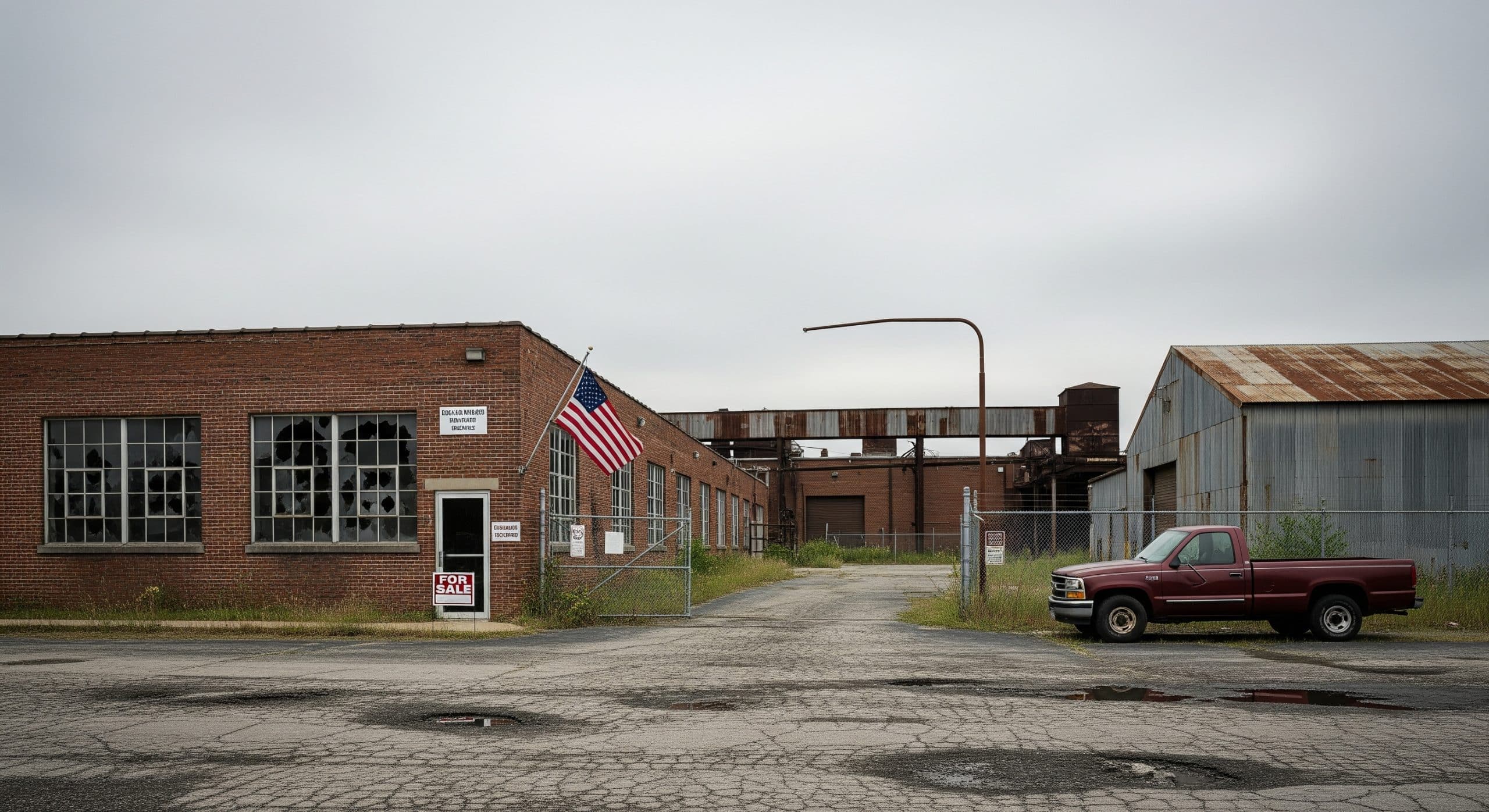In July 2025, the ISM Manufacturing PMI fell to 48.0—a nine-month low—marking the fifth consecutive month of contraction in the sector. The one-point drop from June underscores a persistent decline in industrial activity, even as equity markets show resilience. With 31 out of the last 33 months marked by contraction, it is increasingly evident that U.S. manufacturing is not facing a temporary setback, but a long-term structural downturn.
A Sector in Structural Retreat
This is no longer about a single disappointing data point—it’s a trend. The U.S. economy, once anchored by a robust and export-oriented industrial base, is witnessing a fundamental shift. Years of offshoring have hollowed out core manufacturing capabilities, and recent attempts to reshore production have struggled to gain traction in the face of soaring input costs, tight labor markets, and capital constraints.
For many producers, bringing production back to U.S. soil has proven unprofitable. Between the rising cost of credit and lingering logistical inefficiencies, even high-margin operations are being squeezed.
New Orders in Decline – A Warning Sign
Perhaps the most troubling signal comes from the new orders component of the ISM report, which contracted for the sixth consecutive month. New orders are forward-looking by nature—they represent client sentiment and business expectations. When they fall consistently, it reflects a demand shock that is already unfolding across the economy.
This pullback coincides with a slowdown in global trade, especially from China, where industrial activity is also stagnating. For U.S. manufacturers who depend on international buyers, weakening foreign demand adds a second layer of vulnerability to the already soft domestic market.
Layoffs Mounting: A Red Flag for the Labor Market
The ISM Employment Index dropped by 1.6 points in July, reaching 43.4—the lowest level since 2020. According to the report, 25% of manufacturers reduced their payrolls last month, the highest share since the peak of the COVID crisis. That figure alone should raise serious concerns.
These cuts are not merely defensive—they indicate that firms no longer expect a near-term rebound. As employers scale back, the ripple effect threatens service sectors that rely on industrial activity: logistics, business support, catering, and retail. The risk is no longer contained within factory walls—it is spreading outward.
Monetary Pressure and Hidden Inflation
The Federal Reserve’s aggressive rate hikes since 2022 have significantly raised borrowing costs across the board. For capital-intensive industries like manufacturing, this is especially damaging. Financing equipment upgrades, supply contracts, or facility expansions has become prohibitively expensive for many mid-sized operators.
Adding to the pain are elevated energy prices, insurance premiums, and input costs. Even as CPI inflation appears to moderate, manufacturers face what could be called “embedded inflation”—non-transitory cost pressures that erode margins without directly affecting consumer price indices.
Political Implications and Regional Strain
The industrial slump is not just an economic issue—it’s a political fault line. Key swing states like Ohio, Michigan, Pennsylvania, and Wisconsin, historically reliant on heavy manufacturing, are now bearing the brunt of the downturn. Rising unemployment and factory closures in these regions could influence upcoming elections, amplifying populist sentiment and economic discontent.
If unaddressed, the erosion of manufacturing jobs could reshape political discourse in 2026, just as it did in 2016. Voters in these industrial heartlands are unlikely to respond passively to another cycle of deindustrialization.
A Path Forward? Not Without Intervention
Despite the grim backdrop, some analysts believe there is still a path toward stabilization. Policy responses such as targeted tax relief, reshoring incentives, and enhanced infrastructure investment may offer partial relief. Others argue that automation, robotics, and advanced manufacturing technologies are the only sustainable solution to make domestic production cost-effective again.
There’s also speculation that a dovish pivot from the Fed—possibly in Q4 2025—could revive credit flows and ease some of the funding pressures plaguing the sector. However, absent a turnaround in demand and confidence, these measures may not be enough to reverse the broader trend.
Comparison, examination, and analysis between investment houses
Leave your details, and an expert from our team will get back to you as soon as possible
* This article, in whole or in part, does not contain any promise of investment returns, nor does it constitute professional advice to make investments in any particular field.
To read more about the full disclaimer, click here- Articles
- •
- 10 Min Read
- •
- ago 4 minutes
 ANALYSIS-CHINESE FIRMS SET FOR RECORD US LISTINGS, UNDETERRED BY GEOPOLITICS
ANALYSIS-CHINESE FIRMS SET FOR RECORD US LISTINGS, UNDETERRED BY GEOPOLITICS
Analysis: Chinese Companies Target U.S. Listings Despite Geopolitical Tensions In recent months, Chinese firms have shown strong interest in listing
- ago 4 minutes
- •
- 10 Min Read
Analysis: Chinese Companies Target U.S. Listings Despite Geopolitical Tensions In recent months, Chinese firms have shown strong interest in listing
- Articles
- •
- 13 Min Read
- •
- ago 6 minutes
 Carvana’s Wild Ride: From Total Collapse to a Historic Comeback
Carvana’s Wild Ride: From Total Collapse to a Historic Comeback
Carvana Co. (CVNA), the online used-car retailer once written off as a pandemic-era bubble, has engineered one of the most
- ago 6 minutes
- •
- 13 Min Read
Carvana Co. (CVNA), the online used-car retailer once written off as a pandemic-era bubble, has engineered one of the most
- Articles
- •
- 13 Min Read
- •
- ago 19 minutes
 Adobe vs. Figma: A Strategic Clash Over the Future of Digital Design
Adobe vs. Figma: A Strategic Clash Over the Future of Digital Design
When Adobe announced its intent to acquire Figma in September 2022 for an eye-popping $20 billion, it sent shockwaves through
- ago 19 minutes
- •
- 13 Min Read
When Adobe announced its intent to acquire Figma in September 2022 for an eye-popping $20 billion, it sent shockwaves through
- אור שושן
- •
- 9 Min Read
- •
- ago 41 minutes
 EU Markets Overview-2025-08-05
EU Markets Overview-2025-08-05
Latest Updates on Major European Stock Indices: DAX, CAC 40, FTSE 100, and More European stock indices are closely watched
- ago 41 minutes
- •
- 9 Min Read
Latest Updates on Major European Stock Indices: DAX, CAC 40, FTSE 100, and More European stock indices are closely watched












